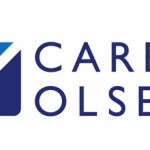Top 5 Law Firm Tech Trends: Are They Truly Feasible for 2016?

What will happen in the New Year? Now is a great time for firms to benchmark potential options, technology and processes to further improve their practices.
Always this time of year, talk inevitably turns to trends. What will happen in the New Year? What trends will prevail? It’s a great way for law firms to benchmark potential options, technology and processes to further improve their practices.
The transition from 2015 and 2016 is no different. Based on our daily work with numerous law firms, here are five predictions we see for 2016. Further, we break each down with a rating of 1-5. Five represents a high possibility for 2016 while 1 means there is a highly unlikely chance we’ll see a high rate of adoption of that particular trend in 2016.
Trend #1: Going paperless
According to a recent survey by kCura and Ari Kaplan Advisors, AmLaw 200 attorneys predict that the law firm environment could be paperless in as little as five years. Naturally, the idea of going paperless has grand appeal to law firms. It means they can save money on physical storage space, printing and other paper-related operations. Also, storing data electronically is vastly cheaper than storing it physically.
However, by their nature, attorneys have lots of paper and books. Many still prefer to review and read documents in hard copy form instead of electronic. This isn’t just old-fashioned preference: According to Scientific American, reading on paper offers advantages over reading on screens. “… [E]vidence from laboratory experiments, polls and consumer reports indicates that modern screens and e-readers fail to adequately recreate certain tactile experiences of reading on paper that many people miss and, more importantly, prevent people from navigating long texts in an intuitive and satisfying way,” an article noted.
Law firms still receive a significant amount of paper documents, including mail, medical records and discovery information. Many law firms also keep their paper files for a minimum of seven years before destroying them, based on state laws and bar association requirements.
In order to move to a digital environment, law firms will need to redefine processes, invest in more resources such as extra staff and software, and purchase more devices such as scanners. Law firms will also need to get buy-in from internal users, which is often a challenge. Clients will also need to be convinced to receive their bills electronically since many have a preference for paper-based invoices and some think it is in poor taste to send an electronic bill for large sums of money.
Feasibility Index: 2.5 out 5
While the trend and the talk is focused on going completely paperless, law firms should focus on smaller steps in 2016. A feasible first step is to digitize legacy data. This can help lay the groundwork for going paperless firm-wide and immediately increase the ease of access and searching legacy data.
Trend #2: Communicating with clients through alternative means
Traditionally, lawyers have relied on meetings, phone calls and letters written on paper to communicate with their clients. As we prepare for 2016, many are wondering whether advances in technology will eliminate the need to meet one-on-one. The trend towards alternative means of contacting clients has spread, from video conferencing such as Skype and Facetime to texting.
The advantages are clear—with video conferencing, it’s easy to find low- or no-cost providers. Internet access like fiber cable enables skip-free conferencing. Clients, as well as attorneys, have grown comfortable with these technologies. Video conferencing enables visual contact, which is one of the advantages of face-to-face meetings, while also allowing both sides to share information on the fly. Clients and attorneys are also familiar with text messaging, and both groups appreciate its simplicity and ability to get quasi-immediate responses.
Feasibility Index: 4 out of 5
This is a very feasible trend, and the use of video conferencing and texting for client communications will increase in 2016 and beyond. However, there is a caveat. Even though technology enables these types of communications, attorneys still need to be mindful of privilege issues. Individuals unaffiliated with the case may be able to hear or see communications as they are happening if the communications are handled in a public setting. (For example, think about the last time you visited a grocery store and overheard a phone or Facetime conversation. Private conversations in public places are becoming a very common place phenomena, along with their acceptance of that practice.) Attorneys also need to make sure their smartphones and tablets are password protected to keep anyone from accessing client information and reading texts. It’s also important to keep good records and notes about all these communications, so others working on the case can have access to the same information.
Trend #3: Artificial Intelligence in a legal environment
Industry publications and blogs make it sound like just a matter of time before all attorneys are replaced by robots or software programs, and artificial intelligence will run practices, handle cases and argue the law in front of juries. Consider IBM’s Watson. According to IBM, Watson is “a technology platform that uses natural language processing and machine learning to reveal insights from large amounts of unstructured data.”
Feasibility Index: 1 out of 5
Realistically, robots won’t replace lawyers in 2016, or for years to come. While Google’s DeepMind AI can beat some Atari games, that’s a long way from mastering closing arguments. There is still the importance of intellectual capacity to understand and debate the law. However, law firms are now harnessing the power of predictive analytics to analyze cases before accepting them to determine if they can be won, how much they will cost and other factors. Predictive analytics have definitely become mainstream and their influence will continue to grow in 2016.
Trend #4: Ditching the office to work at home
In 2016, there is talk that that even more lawyers will jettison office spaces in order to create home offices as part of a cost-saving and convenience effort. Lawyers can successfully run a practice by working remotely, visiting client offices, meeting virtually and renting meeting spaces as necessary. Nearly every other industry has opened up to virtual working, so it’s understandable that it is infiltrating the legal world as well. Tools that make this possible include high-speed Internet, cloud-based technology, co-working spaces and more. Culturally, attorneys and clients have become more accepting of the idea of home-based offices for lawyers.
Feasibility Index: 5 out of 5
Working from home is extremely feasible for attorneys and we will see increasing numbers of legal professionals doing this in 2016.
Source: LegalTechNews – Top 5 Law Firm Tech Trends: Are They Truly Feasible for 2016?





























